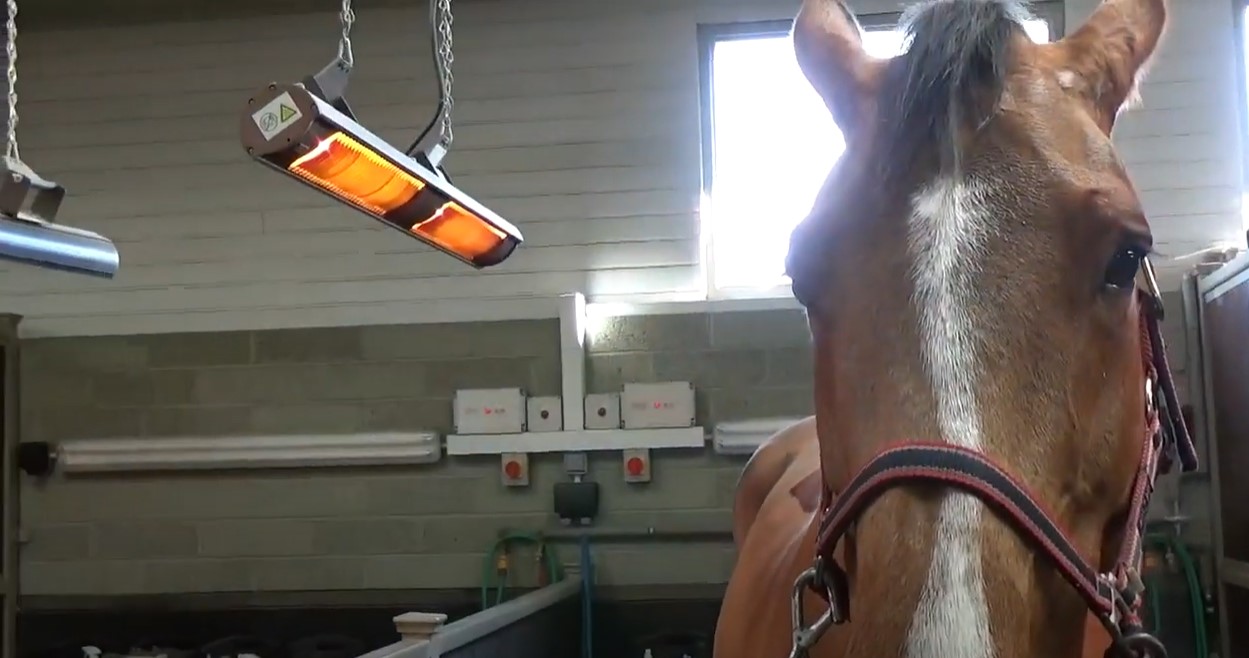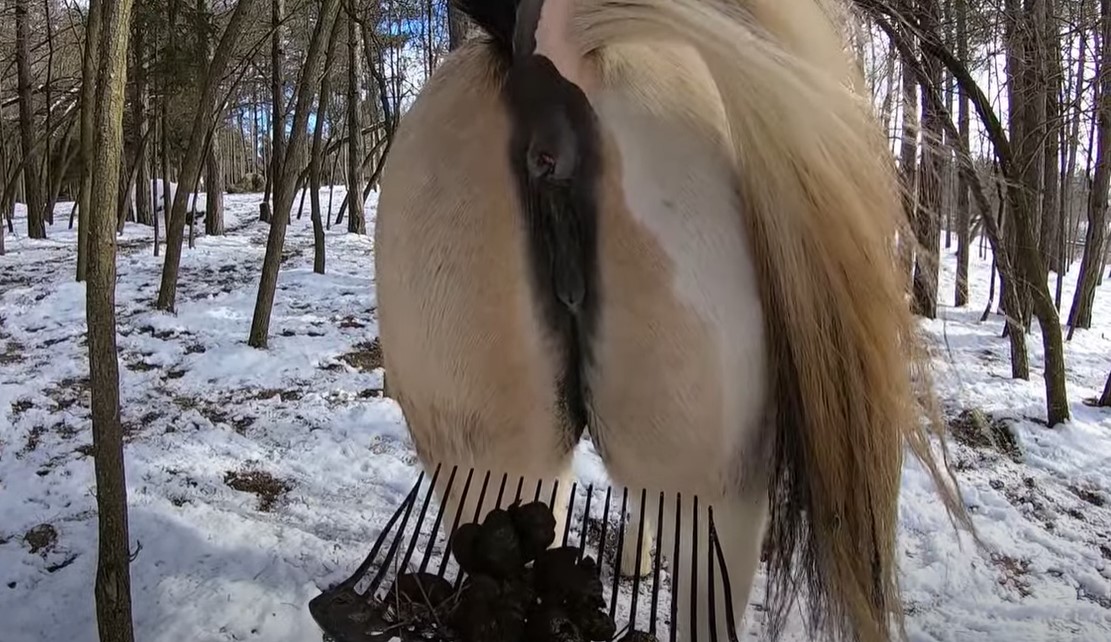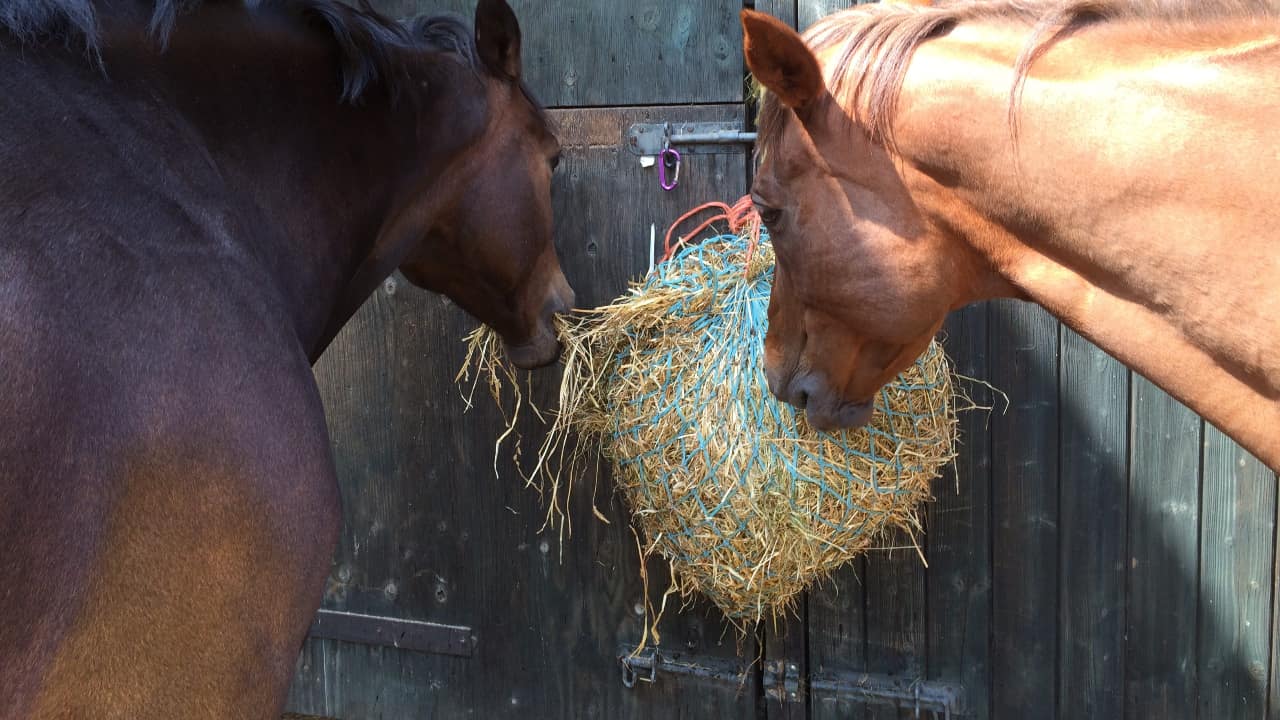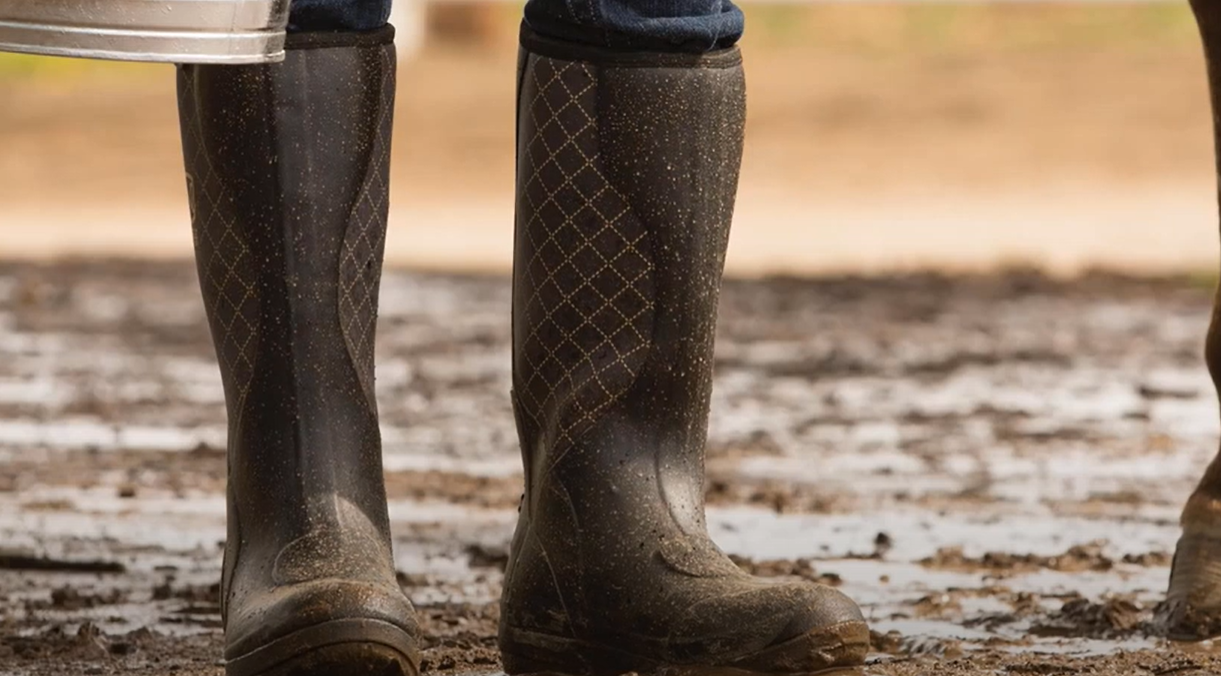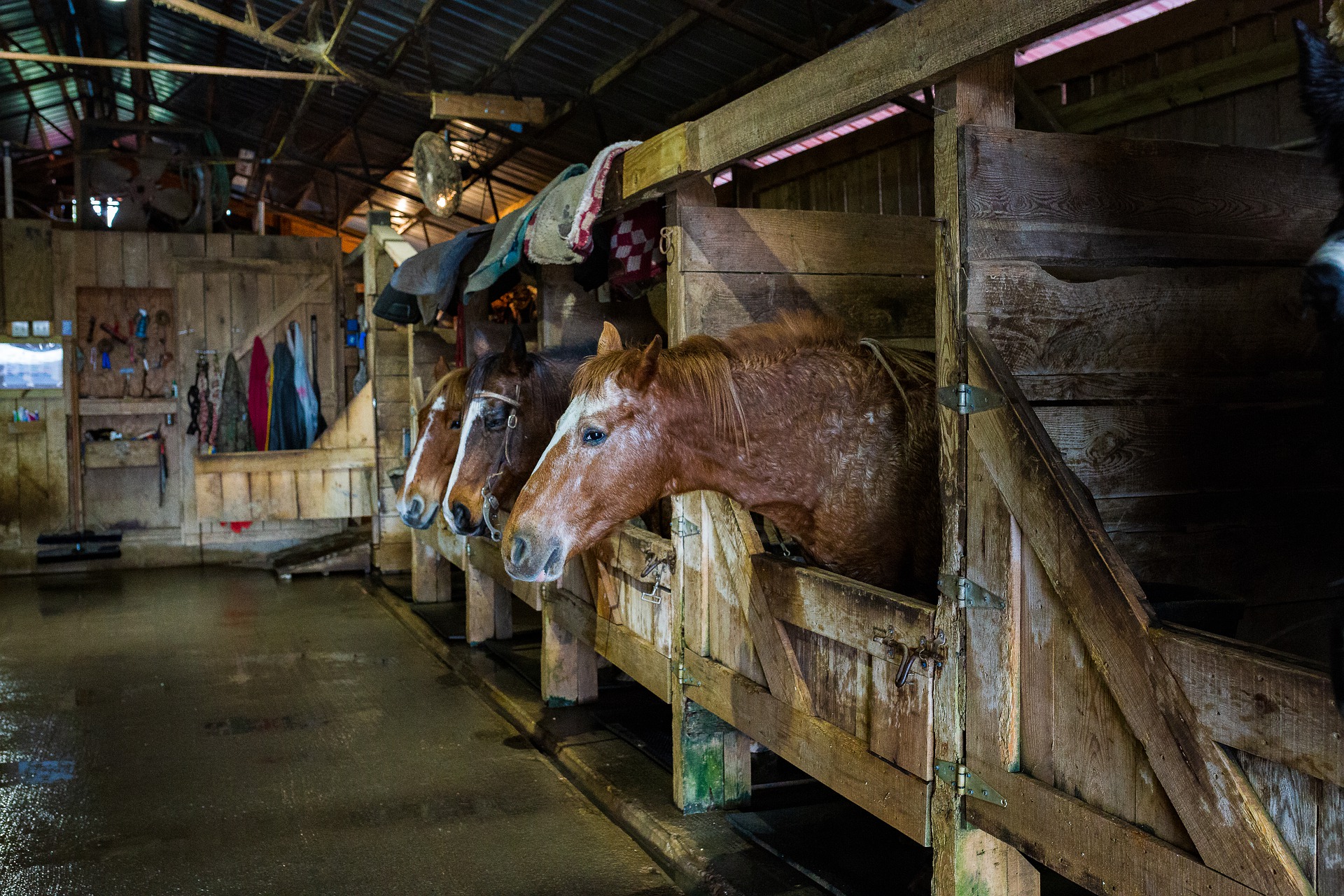Yes, most pole barns have insulation. But they usually can't keep temperatures normal when the cold weather rolls in. That's why most ranchers invest in the best barn heaters to keep their animals warm through the cold, winter months.
Although you might think very few differences separate barn heaters and heating options on the market, they're actually quite diverse. And understanding all of these differences can help you land a horse stall heater that actually meets expectations.
The 5 Best Heater for Horse Barns
1. Dr. Infrared Heater DR-238
Designed to heat pole barns, the DR-238 from Dr. Infrared comes in a powerful 3000W version that can heat up to 300 square feet of enclosed horse barn space. Using radiant heat, this infrared system uses aluminum reflectors that help extend the distance that the infrared waves can travel.
Intended as a wall or ceiling mounted heater, this choice is easy to install and makes sure that your animals remain a safe distance from the heat source. Touting effortless plug-and-go functionality, this pick works straight out of the box with zero set-up required, making it one of the most popular electric heaters on the scene.
Another popular infrared heating device, the C15 Heater from Econat comes with a 1500W rating, allowing the machine to heat up indoor spaces up to 161 square feet. Incorporating weather proof material, the heater promises to last for years with little need for maintenance and upkeep.
The C15 provides horse keepers the option to install the device on a wall or ceiling. But in case neither of those choices work out for you, you can also get a standing mount (sold separately) to keep the device standing in your horse barn area. Equipped with an extended power cord, all you need to do to get the C15 working would be to simply plug it in.
This electric portable standalone heater from Comfort Zone offers the perfect solution for cold spots in your barn or as an extra heat source. The forced air system was designed for milking barns, and offers three different heating strengths, letting you fine-tune the temperatures to match the ambient air.
Compact and efficient, this little electric heater requires zero installation, and works perfectly to make your barn warmer right out of the box. And to counter any fire risks, the design comes with a automatic switch off feature that turns the machine off when it's been tipped over.
With a whopping 80,000 max BTU rating, this choice from Mr. Heater features powerful performance for supersized barns in frigid temperatures. Operating on natural gas, it also provides relatively affordable operation that can help you cut back on overhead costs during the winter months.
Compatible with WiFi and digital thermostats, this juggernaut of a heating system provides the option to convert to an automatic heat control system. And because it is a big ticket item, the model comes with a 10 year replacement warranty to give you that extra stretch of consumer confidence. Keep in mind though that it might not be as easy to install as other picks.
Capable of handling up to 500 square feet of pole barn space, this heavy duty fan forced ceiling mounted heater from Fahrenheat uses forced warm air technology to increase barn temperature. The heavy duty device comes with adjustable louvers and ceiling mounting hardware that lets you hang the entire system from a height to prevent any accidents with your animals.
To reduce the risk of overheating and fire, the Fahrenheat system uses an automatic shut-off feature that turns the fans and heating elements off once they reach critical levels. It also comes with a built in thermostat that lets you designate the ideal temperatures to achieve your desired heat increase.
Infrared Heater vs Forced Air Heater
The biggest consideration you'll make when choosing the best barn heater is whether you should go for an infrared heater or a forced air heater. These two distinct heating system designs vary in the way that they produce and emit heat.
Forced Air Heaters
As its name suggests, a forced warm air heating system pushes hot air out of its vent to warm up cold temperatures. These heaters pull in cold air and increase its temperature by passing it through a heat exchange system or a heating element. The heat is then returned to the space by blowing hot air out.
Forced air heaters work best in livestock barns with low ceilings because heated air tends to rise. If a forced warm air heater were used in a barn with high ceilings, the heat would move upwards and beyond the animals requiring warmth.
Another thing to consider is that forced air heating systems tend to perform more efficiently in barns with good insulation. Insulated barns work better to prevent cold air from infiltrating the space, thus allowing forced air heat generators to increase barn temperature without expending too much energy.
Infrared Heaters
Considered a more contemporary technology, infrared heaters turn electrical energy to heat. Its panels radiate with infrared heat - an invisible energy to the naked eye. When the heat radiates away from the heating panels, it transfers to objects in the space.
This radiant heating then transfers to animals or people in the vicinity of the heater. That means with infrared heaters, you warm the animals and not the surrounding air. So your horses can feel warm in the presence of an infrared heat source even if the air around them remains cold.
But similar to forced air systems, infrared heating systems have their limitations. Although they work just fine in barns with high ceilings, they're not ideal in spaces with lots of obstacles and walls that could prevent radiation from transferring to animals in the area.
Considerations When Buying Barn Heaters
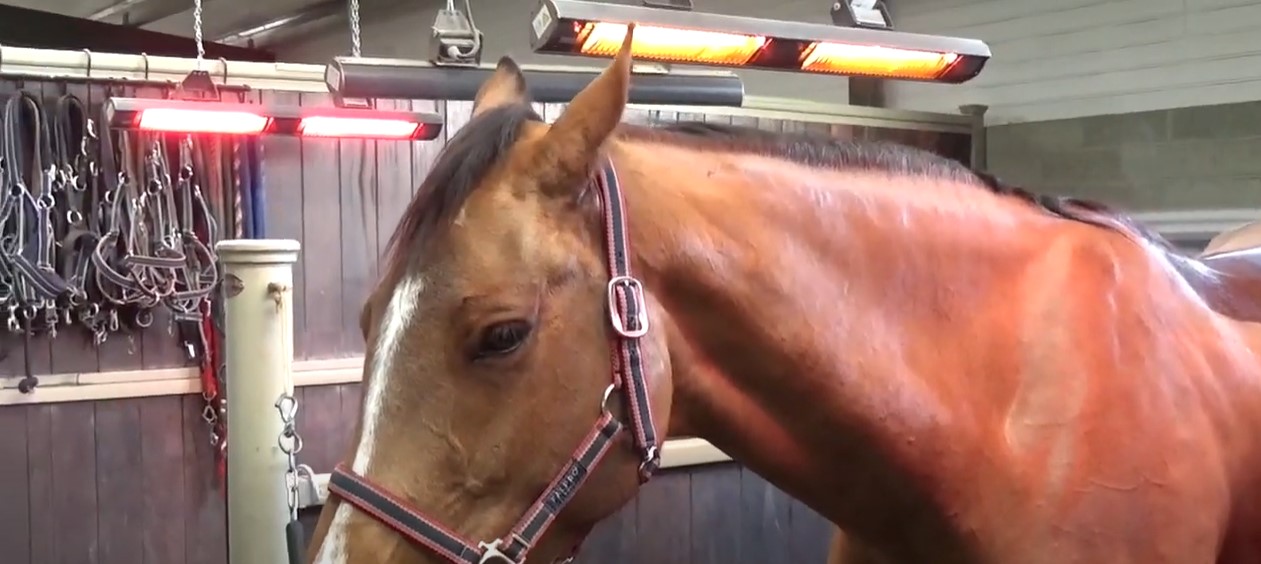
Barn heat distribution systems can get expensive. So unless you're prepared and willing to spend your money on a heater that won't be able to do the job, it's important that you take the time to understand the specifics.
Here are some major considerations you need to take into account before you shell out cash on that barn heater you've been eyeing:
Type of Heater
Generally, barn heating systems fall into two categories -- forced warm air and infrared. Choosing between the two ultimately depends on the specifications of your barn.
For barns with high ceilings and poor ventilation, infrared heaters work best. But if you've got a low-ceiling barn with fair to good insulation, a cheaper forced warm air heater should work just fine.
Keep in mind though that in colder conditions, forced warm air heaters may have to work double time since they work by directly heating the ambient air. This can call for significant spending on gas or electricity, depending on the power source.
In the same token, infrared heat generators may struggle in barns where there are lots of obstructions, wooden posts, and walls. Since infrared light travels through space to transfer to objects in the area, anything that blocks the wave's way to your animals can prevent that heat transfer from happening.
Power Source
The type of energy your heater uses will play a major role in the cost of keeping it operational. Remember that winter can extend for months (see how much hay to feed a horse in the winter). So buying the wrong type of heater can set you back serious bucks depending on its intended energy source.
Some energy sources include:
- Propane
- Gas
- Kerosene
- Natural gas
- Electricity
- Recycled oil
Loads of computations come into play when calculating how much money it will cost to use a specific kind of heater. But you should get a pretty good idea of the cost by considering your space's qualities.
For instance, if you're trying to heat a large space with high ceilings using a propane gas powered forced air heater, you might find yourself looking at a seriously expensive winter. Natural gas heating solutions can cost significantly less to operate, but installation presents steep upfront expenses.
Generally speaking, infrared heaters almost always come out on top as the most energy efficient even in particularly cold weather. As long as your space has few obstructions, a single infrared heater may prove to be a sufficient heat source for all of your animals.
Heat Rating
Heat ratings come in the measure of BTU or British thermal unit. Now, don't get confused. BTUs are nothing like Celsius or Fahrenheit that tell you how hot something is. On the contrary, BTUs talk about thermal energy.
For instance, some heaters will come with a heat rating in BTUs per hour. This rating simply tells you how much heat the specific barn heater can remove from your space in an hour. The higher the BTU rating, the higher the heat provided, the bigger the space the heater can work to warm up. But that also means that the decide may require more energy to operate.
Installation and Attachment
For small pole barn spaces that require just enough heat to keep a bucket of water from freezing over, some designs offer plug-and-play functionality. That means you can just plug the heater into an outlet, and it should work with no additional set-up.
These heaters are particularly easy to install when you don't need a fixed space heater in your barn throughout the year.
But if you want to heat up a large space, you might have to consider more complex heat systems that present an extra cost for installation. A ceiling mounted heater offers greater heating coverage, but isn't easy to install, requiring hard wiring, cables, and even bespoke mounting.
Temperature Settings
A machine that lets you set the specific temperature can work better to keep your animals in good shape throughout the cold months. While it might seem ideal, keeping your barn too hot during the winter can prevent your horses from growing a winter coat.
This can then cause issues for them as they step outside for exercise and socialization during the cold season. Sometimes, barns don't really get too cold, requiring minimal temperature adjustments that some machines produce too much warmth for.
Safety and Legal Requirements
Barn fires are a real threat, and keeping a heater running in your barn, away from your immediate view, can cause major trouble for your farm animals. If you use your barn for storing equipment, then a fire becomes doubly problematic.
Aside from making sure your chosen heater meets legal safety requirements, you also have to consider how it might interact with your space. Generally speaking, infrared heat sources tend to come with a reduced fire risk.
But other heaters come with a range of features for extra protection. For instance, heavy duty fan forced ceiling mounted systems come with an automatic shut off feature that cuts operations when the heat inside the machine exceeds safe levels.
It's also important to try to prevent condensation build up to reduce the chances of electrical issues. Good ventilation can keep humidity low and reduce moisture on your heating devices.
Frequently Asked Questions
What is the best way to heat a barn?
Radiant heaters often prove to be the best heating solution for barns. Wood and hay are highly flammable. But because radiant heat works differently than hot air, it transfers to animals and humans in the space without much risk of a fire breaking out.
How many BTU do I need to heat my barn?
To get a rough estimate of the heating requirements for your barn size, here's a quick computation:
- Measure your space in square feet.
- It takes 10 watts of energy to heat 1 square foot of space in cold conditions. Multiply the measurement of your space by 10 watts. This gives you the estimated total watts necessary for your space.
- Multiply the total watts by 3.41 to convert to BTU. This gives you the total BTU rating required for your space.
Are infrared heaters safe for barns?
Yes. Because this heat source doesn't warm up the ambient air, it effectively heats a space without an increased risk of fire hazard. Nevertheless, electrical failures can still cause a spark and subsequently, a fire. Choosing a machine that meets safety ratings and legal requirements can help save you and your animals the danger.
How can I heat my barn without electricity?
Insulation always works wonders to maintain proper temperature inside a barn. But in case a foam insulation renovation isn't within the budget, you can try solar window heaters, a wood stove, or a heater than runs on gas, propane, or natural gas.
If you're on the brink of building a barn, keep in mind that steel sided barns see more drastic temperature drops on cold days versus wood barns.
Over to You
When those cold months start to settle in, you're going to want to make sure your horses are just as warm and cozy as you are. While horse blankets work well, adding a pole barn heater can offer tremendous comfort for your animals during the winter season. But there's lots to consider before you make that purchase.
As long as you take safety, size, and efficiency into account, you can be sure to find a heater that fits the bill. But if you need a little extra help narrowing down your options, our list of the best barn heaters should lead you in the right direction.
